
Overshot card on top of loaded shot column. (Photo: Jason Wimbiscus)
In certain shotshell loading circumstances, it is advantageous to apply a roll crimp rather than the more common fold crimp. For example, loads consisting of large pellets such as buckshot tend to take up more space per unit of mass than loads consisting of fine birdshot. While 1.125 ounces of birdshot may easily fit into a hull, 1.125 ounces of #000 buck may not. Roll crimping leaves more room inside a hull to accommodate such space eating shot. Additionally, some loading manuals assert that a good roll crimp will result in more consistent shot to shot chamber pressures. Increased consistency often results in better accuracy, which makes roll crimping especially useful when loading slugs.
While some special tools and a little additional time are required to apply roll crimps, the technique is useful for avid shotshell loaders. The basics of roll crimping follow.
Tools and materials
In order to roll crimp a shotshell, the handloader will need a hull vice to hold the hull in place, a small C-clamp to secure the hull vice to a drill press or table top, a roll crimping tool, and overshot cards. Other tools and materials needed but not pictured include a hand drill or drill press as well as the usual shotshell loading components (hulls, wads, shot etc.).
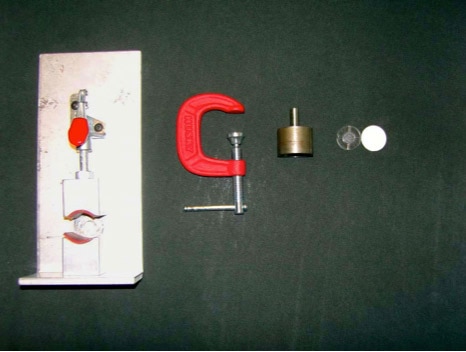
From left to right, hull vice, C-clamp, roll crimping tool and overshot cards. (Photo: Jason Wimbiscus)
Step 1: Affix the roll crimping tool to the drill or drill press
The roll crimping tool will attach to a drill or drill press in a manner similar to any other drill bit. While the procedure can be done with a standard hand drill, I find more even and symmetrical crimps result from using a drill press. Perhaps individuals who are better than I at keeping a hand drill level will obtain will not need a drill press. Prior to using the tool, lubricate it with a very light coating of cooking spray or similar lubricant. Be sure excess oil does not drip into the hull as oil generally spells death for powder and primers.
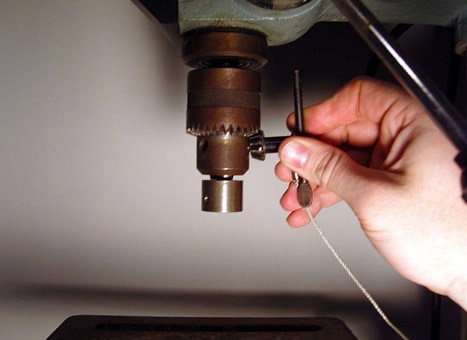
Attaching a roll crimping tool to a drill press is as easy as swapping drill bits. (Photo: Jason Wimbiscus)
Step 2: Secure the hull vice to the drill press and make necessary adjustments
Using the C-clamp, secure the hull vice to the table of the drill press. If using a hand drill, clamp the vice directly to the workbench. Drill press users will now have to adjust the table so that the roll crimping tool aligns with the hull and is set for the proper hull length. To do this, I place a factory loaded shotshell into the vice and use it as template for both alignment and length. The table is then adjusted so that the shell is centered under the crimping tool—and the tool cannot extend beyond the desired case length when lowered all the way. Setting your rig up like this reduces the risk of applying too much pressure and buckling the hull. Hand drill users, unfortunately, will have to crimp by feel and try their best not to crush the hull.
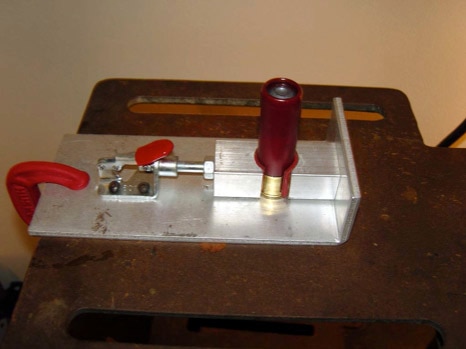
C-clamp securing hull vice to the table of my drill press. Setting your rig up like this reduces the risk of applying too much pressure and buckling the hull. (Photo: Jason Wimbiscus)
Step 3: Load the shotshell and place overshot card atop the shot column
Overshot cards are what secure shot columns in place within the hull. These are made from a variety of materials including a clear, frangible plastic that disintegrates upon firing and a more traditional stiff paper. Ballistic Products Inc. is a good source for these and other components.
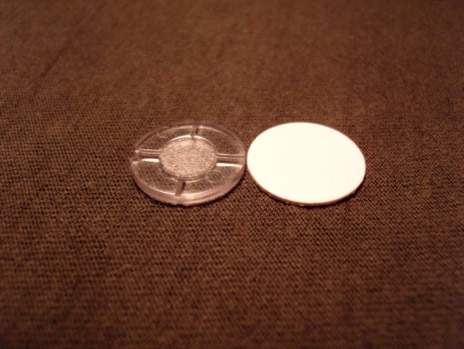
Overshot cards: clear, frangible plastic, left, traditional stiff paper, right. (Photo: Jason Wimbiscus)
Once all components have been loaded into the hull, place an overshot card atop the shot column as pictured at the top of the article. In this case, the load in question is an experimental load of #0000 buckshot that I will test later.
Step 4: Apply the crimp
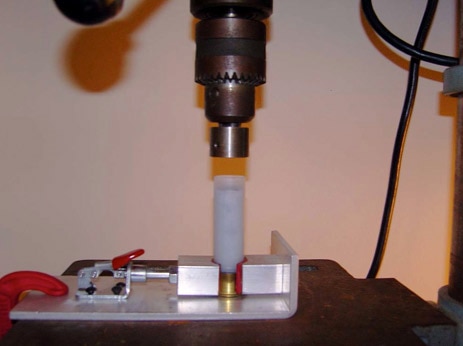
Hull in vice ready to be crimped by drill press. (Photo: Jason Wimbiscus)
Lock the hull into the vice and make sure the drill is set to its lowest possible speed. Activate the drill and lower the tool, very slowly and gradually applying pressure until the desired crimp is achieved. A drill set at too high a speed or the application of too much pressure can destroy the overshot card or the hull, or both.
Step 5: Check the shotshell for length
Examine the shell for obvious damage or defects and check to make sure the desired length was achieved. Adjust the setup as necessary. As with any handloading activity, there is a learning curve to contend with. Expect to ruin a few loads before you get the hang of it.
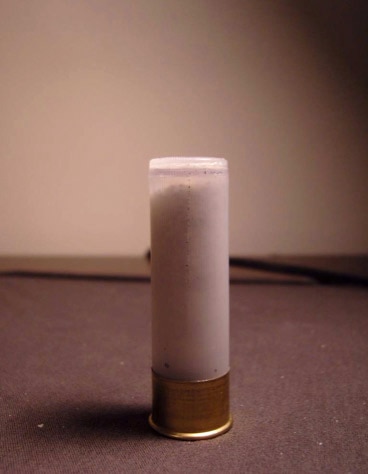
Crimped and loaded shotshell ready for testing. (Photo: Jason Wimbiscus)
Safety: Handloading can be dangerous. Take all advice and instructions found in any Guns.com article at your own risk.
The post Reloading: A beginner’s guide to roll crimping shotshells appeared first on Guns.com.
